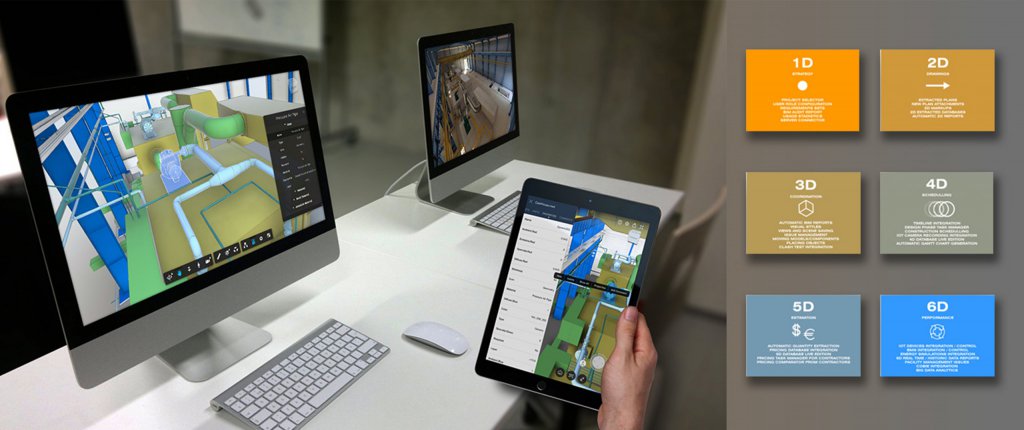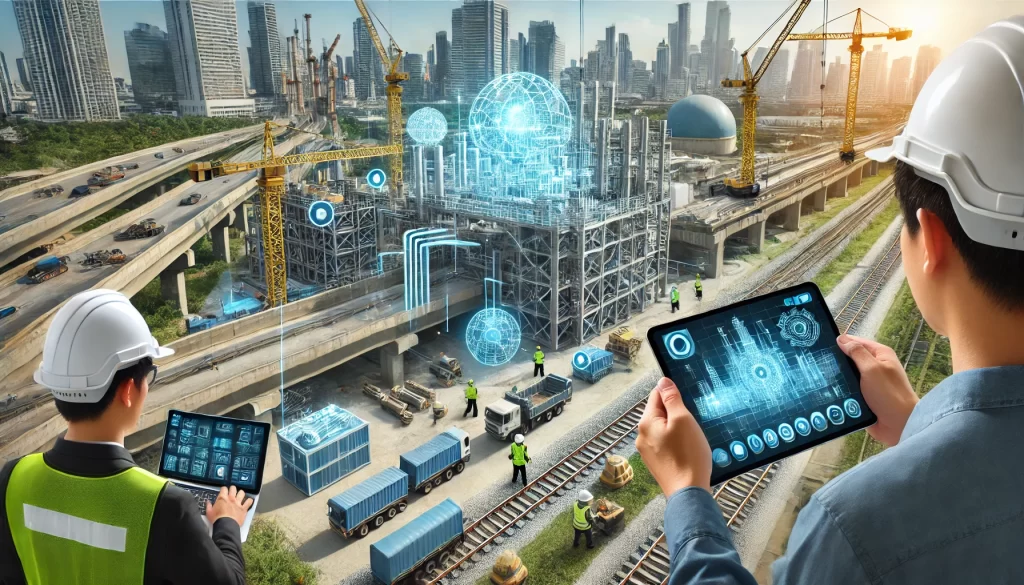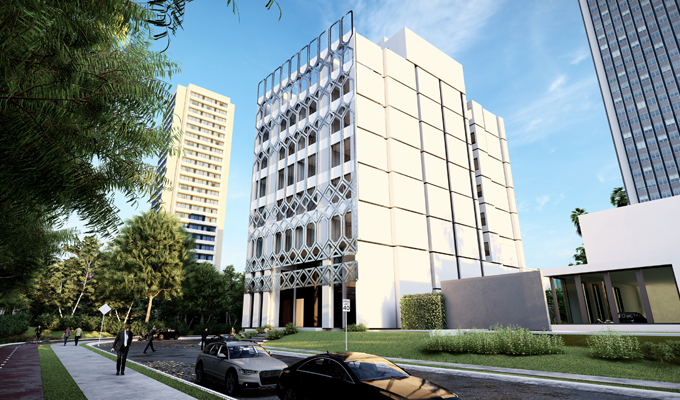VISTA FARAZ Company, through its participation in large national projects and providing services to international clients, consistently utilizes the latest scientific and engineering advancements in offering its services in Building Information Modeling (BIM).
According to ISO 19650-1, Building Information Modeling (BIM) is the use of a digital representation of a built asset to facilitate the processes of design, construction, execution, and operations, as well as asset management, to create a reliable basis for decision-making.

BIM Services Overview
Our BIM-based services encompass a wide range of solutions. VISTA FARAZ, considering local priorities and available technological capabilities, has defined various solutions in this field that can be expanded, developed, and customized based on the limitations of each project.
Benefits of Using BIM
- Enhanced Design Outcomes and Higher Understanding: BIM improves the clarity and quality of designs, enabling better visualization and comprehension of the project.
- Integration of Information Throughout the Project Lifecycle: Ensures consistent and coordinated data from the initial design phase through construction and operation.
- Increased Efficiency and Productivity: Streamlines processes, reduces delays, and enhances overall project performance.
- Higher Quality: Elevates the standards of project outputs through precise and detailed modeling.
- Accurate Management of Design Revisions: Facilitates controlled and traceable changes in design, reducing errors.
- Reduction of Rework: Minimizes the need for corrections and reworks by providing accurate and detailed models from the outset.
- Reduced Manpower: Optimizes resource utilization by reducing the need for extensive manual intervention.

Applications of BIM
Based on research conducted at the University of Pennsylvania, various applications of BIM have been identified. The BIM modeling team at VISTAFARAZ has translated and provided these applications to project teams for their use:
- Mining: Detailed models for mining facilities, tailing storage, and dewatering systems to enhance efficiency, safety, and sustainability. AR and VR allow for virtual site tours and safety training.
- Industry: Designing and managing industrial facilities and manufacturing plants to optimize production processes and resource utilization. AR and VR provide virtual walkthroughs and maintenance simulations.
- Infrastructure Development: Comprehensive models for roads, bridges, tunnels, and urban infrastructure to ensure precise planning, design, and construction. AR and VR facilitate virtual inspections and public consultations.
- Non-Industrial (Residential, Commercial, and Office): Creating detailed models for residential buildings, commercial spaces, and office complexes to improve design accuracy, construction efficiency, and facility management. AR and VR enable immersive design reviews and tenant presentations.
Level of Development (LOD)
According to the American Institute of Architects (AIA), the Level of Development (LOD) indicates the degree to which the specifications of an element in the BIM model conform to its actual nature in the real world. In other words, the closer a part of the model is to what is actually built, the higher its LOD.
- LOD 100: Conceptual Design
- LOD 200: Schematic Design (Phase 1)
- LOD 300: Detailed Design (Phase 2)
- LOD 350: Construction Documentation
- LOD 400: Construction and Assembly
- LOD 500: As-Built

Customer Value Proposition (CVP)
- Enhanced Project Transparency: Our CDE platform provides a single source of truth ensuring all stakeholders have access to up-to-date information on project schedules, material usage, and costs.
- Immersive Visualization and Planning: AR and VR technologies offer immersive experiences, allowing clients to visualize designs in real-time, conduct virtual walkthroughs, and make informed decisions.
- Improved Coordination and Collaboration: The CDE facilitates seamless communication and collaboration among all project participants, reducing conflicts and enhancing project efficiency.
- Optimized Resource Management: By connecting time, material, and cost data, our BIM services enable better planning and utilization of resources, minimizing waste and controlling costs.
- Risk Mitigation: Real-time access to project data allows for early identification and resolution of potential issues, reducing risks and delays.
- Scalability and Flexibility: Our BIM solutions are scalable to accommodate projects of varying sizes and complexities, providing customized solutions to meet specific project requirements.
- Sustainability and Efficiency: Our BIM models support sustainable practices by optimizing resource use, reducing environmental impact, and promoting efficient construction methods.
- Lifecycle Management: Our services extend beyond construction, providing valuable data for ongoing facility management, maintenance, and future renovations.
References
- Nafis Carton Plast Industrial Complex
- Dehloran Petrochemical Industries Complex
- Kavian Gahar Pelletizing Plant
- ChadorMalu II Pelletizing Plant
- Neyriz Pelletizing Plant
- Tebinbulak Pelletizing Plant
- Lloyds Metal Pelletizing Plant
- Project of Relocating and Revamping of Iran Glasswool Plant
- Kowsar Insurance Central Building
- Residential Complex
Specific Industries
- Ferrous Industry: Offering detailed BIM models for steel production facilities, enhancing operational efficiency and resource management. AR and VR enable virtual equipment inspections and staff training.
- Non-Ferrous Industries (Aluminum, Gold, Titanium, Copper, Lithium, etc.): Providing tailored BIM solutions for the design and management of non-ferrous metal production facilities, ensuring precise planning and cost control. AR and VR allow for immersive design evaluations and operational training.
- Industrial Factories: Designing and managing factories for various industrial sectors, optimizing production processes and facility layouts. AR and VR facilitate virtual factory tours and workflow simulations.
BIM advantages:
- Better design and perception
- Integration of information during the life cycle of the project
- Better efficiency and functionality
- Better quality
- Accurate management on design editions
- Avoiding rework
- Less manpower
We are excited to introduce our advanced Building Information Modeling (BIM) services at VISTAFARAZ. Our comprehensive BIM solutions integrate a Common Data Environment (CDE) with cutting-edge AR and VR technologies to enhance project transparency, coordination, and efficiency.
Explore our catalog to learn more about how our BIM services can benefit your projects: Download Our BIM Catalog
Our BIM services offer:
- Real-time project data access and collaboration
- Immersive visualization and planning with AR and VR
- Enhanced resource management and cost control
- Risk mitigation and improved project outcomes



